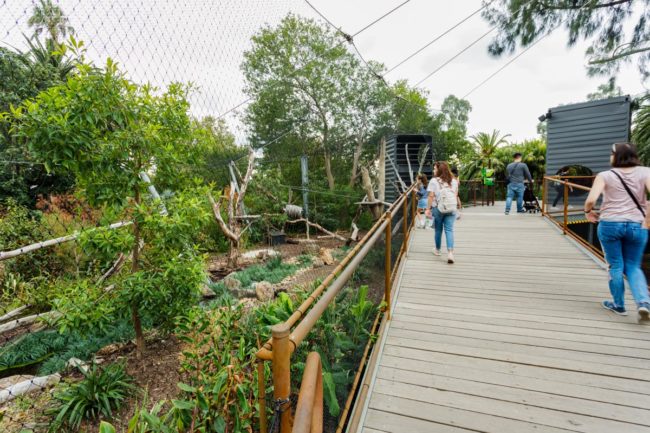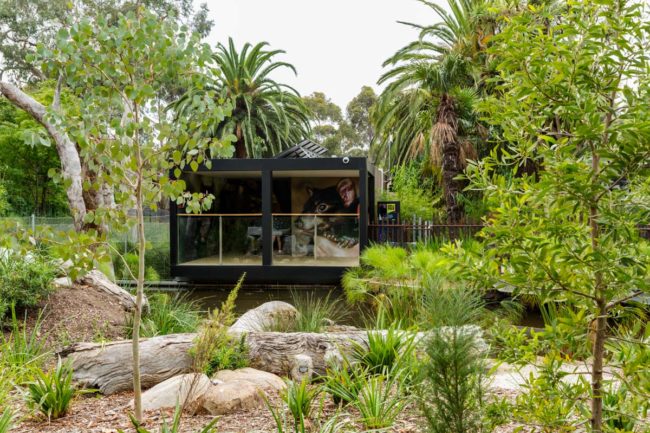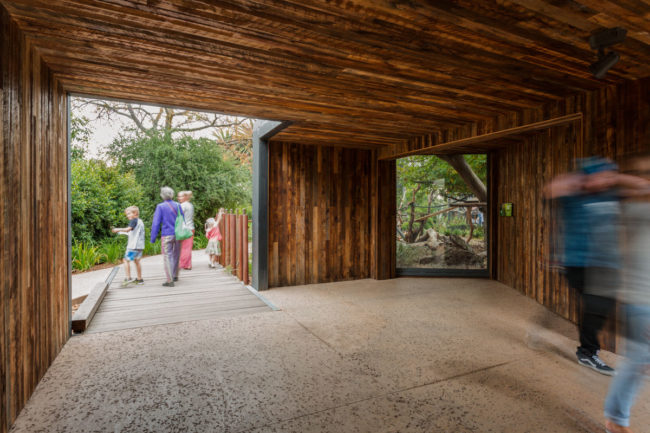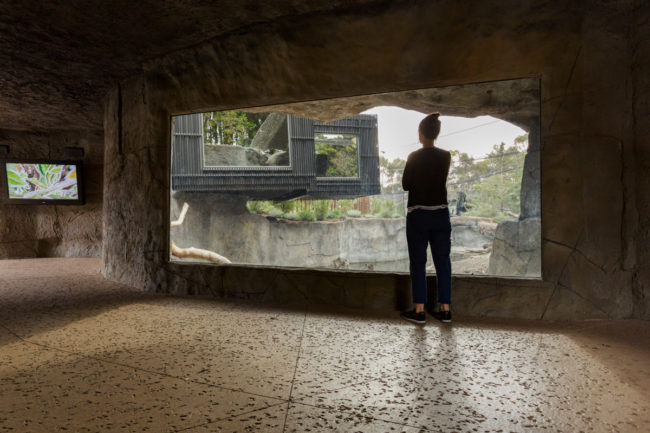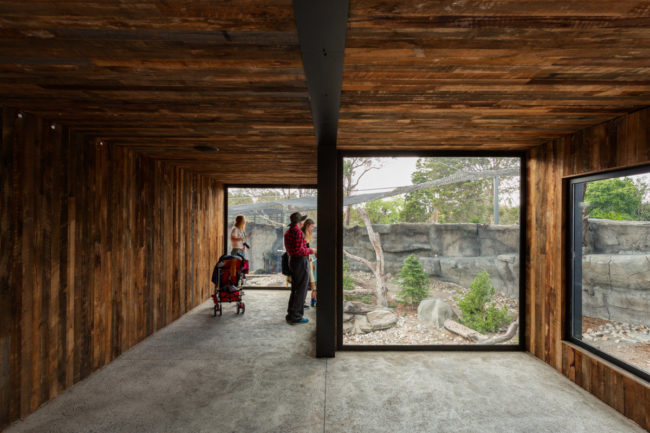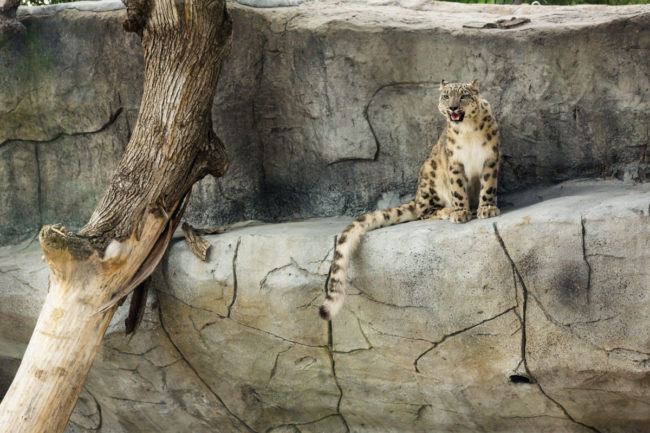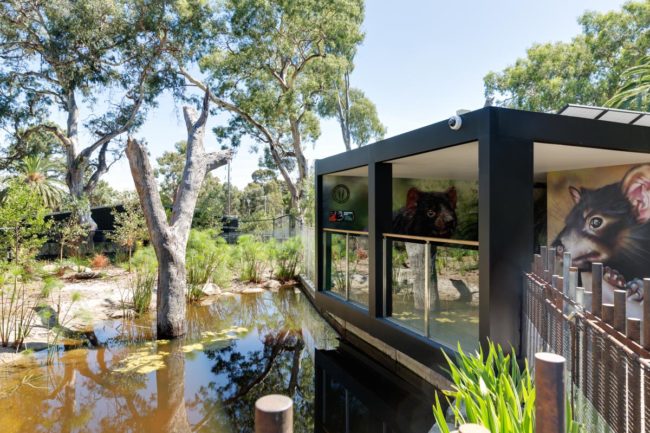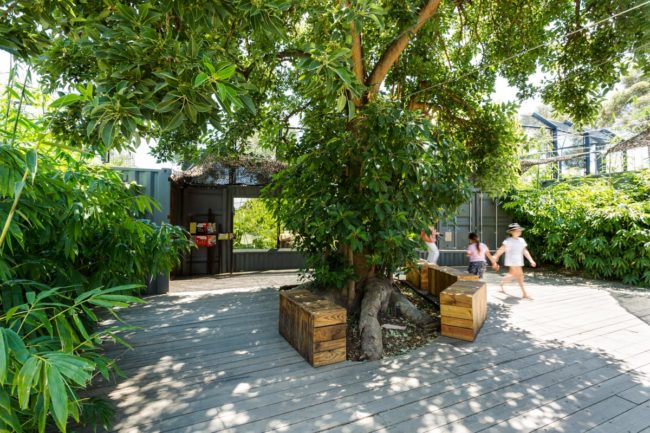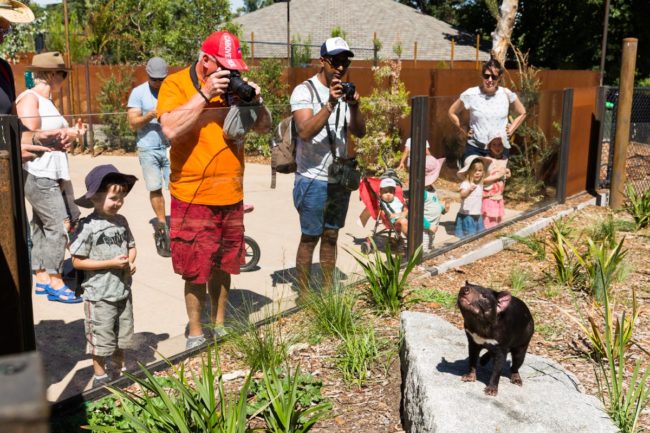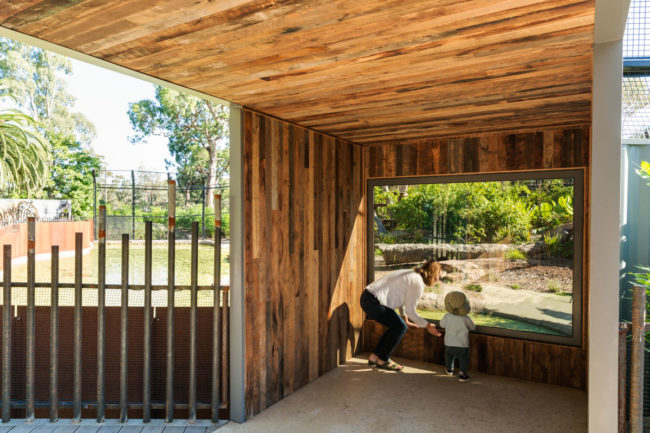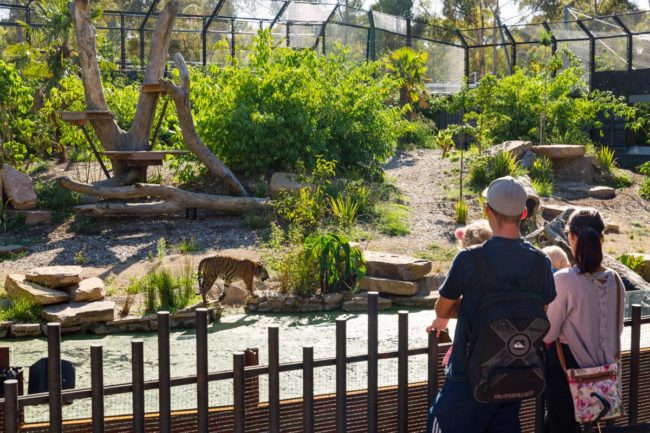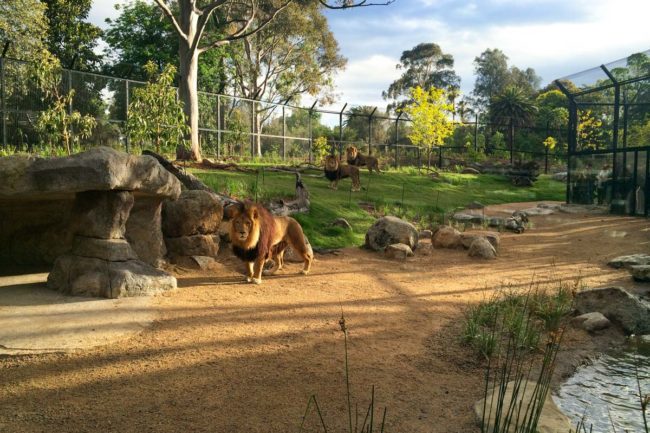Urban Initiatives designed the $13M Carnivores Trail to align with Melbourne Zoo’s Long Range Plan. The Plan aims to significantly increase visitation and enhance the onsite experience by connecting visitors with animals, improving animal welfare and educating the public about wildlife conservation.
This significant project involved the renewal of the north-east section of the Zoo (approximately 15,000 square metres), including the lake and islands (originally developed in 1875), numerous outdated cage exhibits and the 1960s Lion Walkover. The objective central to this project was the creation of an engaging, immersive and memorable visitor experience reflecting best-practice animal enrichment and embodying the conservation values that underpin contemporary zoos.
Designed by ARK, a collaboration between Urban Initiatives, Ola Studio and Arterial Design, the project was implemented in two stages, both of which involved complex management and timing considerations to ensure minimal impact on visitors, animals and the continuing daily operation of the Zoo. Urban Initiatives was the lead design consultant and project manager for both phases.
Stage 1 included Lions, African Wild Dogs and critically endangered Philippine Crocodiles. Centred around the ‘Refuge Tree’ Education Centre and the ‘Waterhole’ where all predators come together, the design fosters understanding of the interrelationship of humans, habitat and predator species. Close up viewing opportunities, vegetation and water play areas were designed to heighten intensity, excitement and intrigue. A 100-year-old fig tree was relocated from within the Zoo to become the Refuge Tree, thus forming a central viewing node for the exhibit. An interpretive journey based upon the ‘join the pack, join the fight’ conservation message was incorporated to inspire visitors to engage in actions that are achievable and beneficial to conservation programs working in the wild.
Stage 2 ‘Leopard Ridge’ included Coati, Snow Leopards, Sumatran Tiger, Tasmanian Devils and the expansion of the African Wild Dog Exhibit. These exhibits forefront world-class animal enrichment by actively engaging the animals, maximising choice and encouraging natural behaviours. Exhibits were set amongst significant existing trees and re-purposed site elements including rockwork and the lake. Local artists were commissioned to convey conservation messages through street art that gives the area a distinctly ‘Melbourne’ feel.
Urban Initiatives worked closely with zookeepers and the assets staff to develop innovative animal enrichment devices that are integrated within landscape features:
- A feeding device embedded in the Snow Leopard rock wall that randomly releases food into the exhibit at varied times and locations.
- Hinged logs wobble when stepped on.
- Rocks contain heating and cooling to encourage lounging.
- Cabled lures can be loaded with meat to encourage big cats to chase and capture as they would prey.
- One-way glass encourages full use of exhibit space by the animals by reducing awareness of visitors.
- Containment moats in the Wild Dog and Tiger exhibits enable swimming, while reducing fence heights.
These features were vital for animal wellbeing and to motivate animal activity, particularly given the shy nature of Leopards and Tigers.
Interpretive elements were designed to encourage parallel play – children climb like Coatis in rope-play containers, scale a wall like the Snow Leopard, stalk like a Tiger, listen for prey in the long grass like a Wild Dog and search for endangered Philippine Crocodile eggs in The Waterhole.
The Carnivores Precinct was the recipient of the AILA Tourism Award 2018 at National level.
Location
Melbourne Zoo, Parkville, Victoria
Role
Lead consultant, Landscape and Exhibit Design
Client
Melbourne Zoo
Construction Budget
$13M
Awards
AILA National: 2018 Tourism Award – Carnivores Trail (Predators Precinct)
Collaboration
ARK
Traditional Owners
Wurundjeri People

